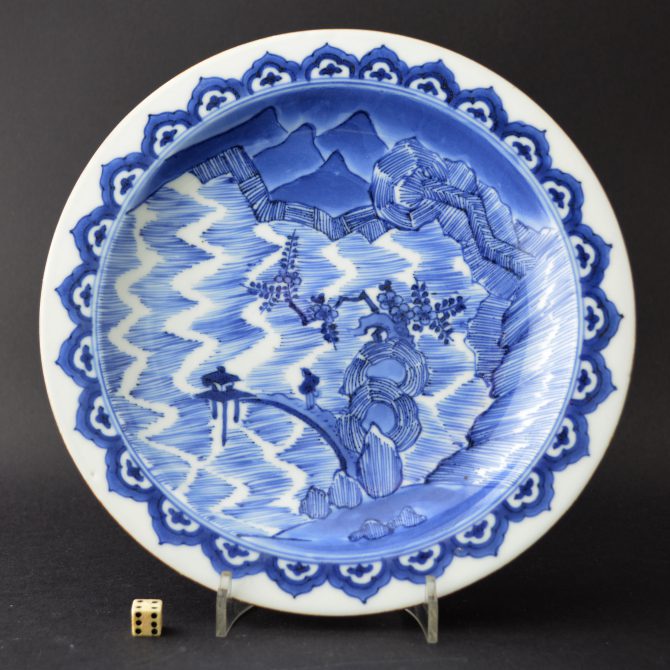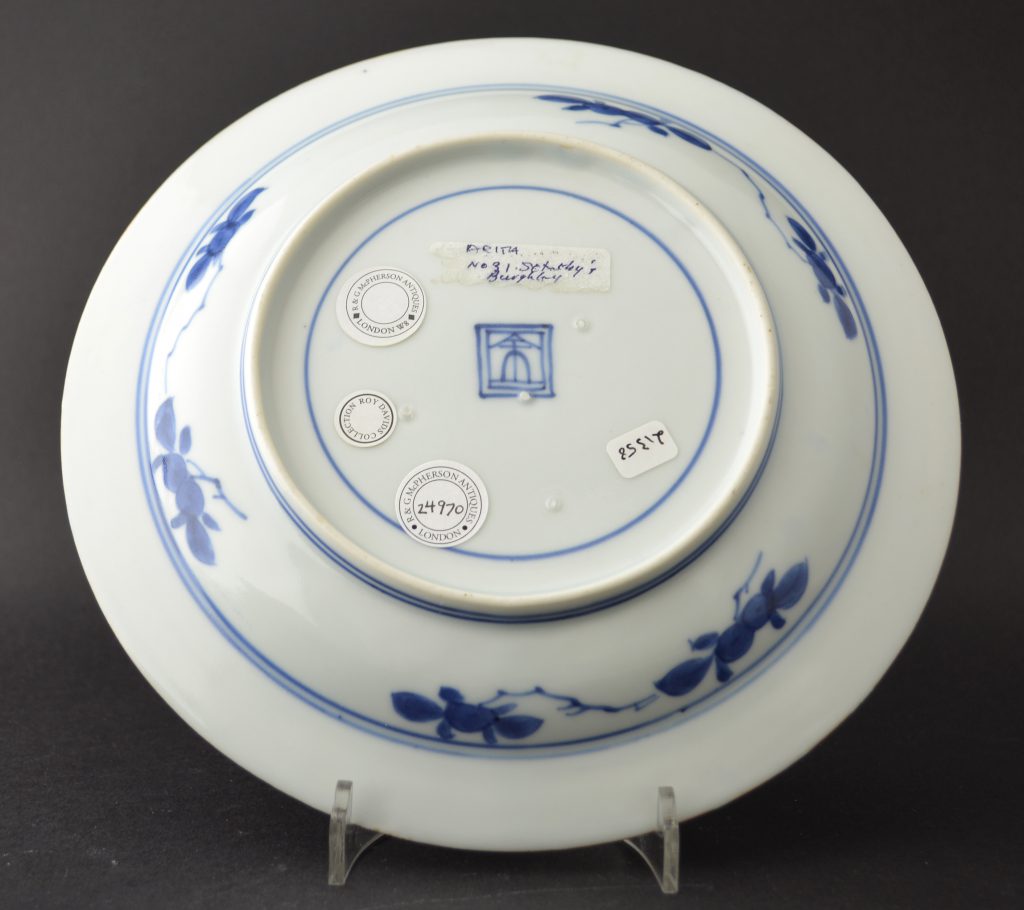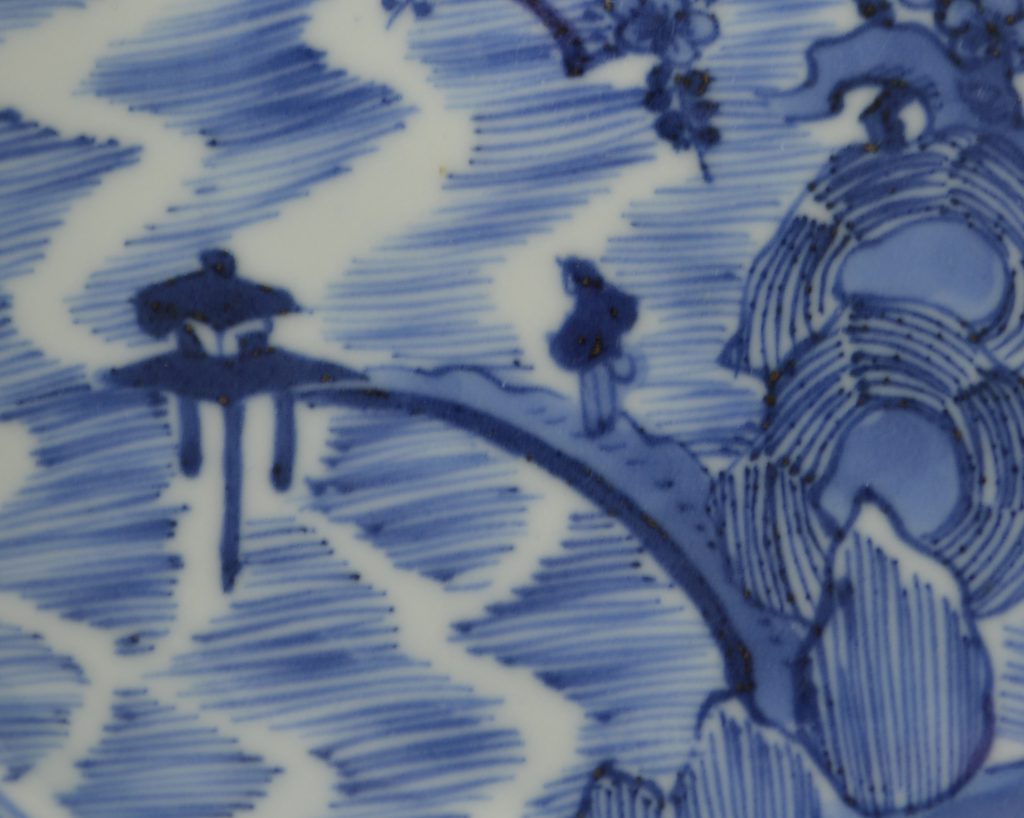
A 17th Century Japanese Porcelain Plate in the ‘Master of the Rocks’ Style
An unusual Japanese porcelain dish in the Master of the rocks style, Arita kilns c.1680-1700. Densely painted in strong tones of cobalt blue with a landscape.
SALE PENDING
- Condition
- In perfect condition.
- Size
- Diameter : 19 cm (7 1/2 inches)
- Provenance
- R and G McPherson Antiques, the Roy Davids Collection of Japanese and Chinese porcelain. From a Private English Collection of 17th and 18th Century Chinese and Japanese Porcelain.
- Stock number
- 24970
- References
- A plate of this design is illustrated in : The Burghley Porcelains, An Exhibition from The Burghley House Collection and Based on the 1688 Inventory and 1690 Devonshire Schedule (Japan Society, New York,1986)
Information
The Master of the Rocks Style :
The phrase Master of the Rocks is unfamiliar to many Chinese, it is another invented category used by western scholars and collectors to pigeon-hole groups of Chinese ceramics, rather like Kraakware or Celadon. However unlike either of these Master of the Rocks first coined by Gerald Reitlinger, is a clear, distinct group. This style lasted from about 1645 to 1690. The highly distinctive painting style consists of landscapes with massive powerful mountains in a linier technique. The style is, for want of a better word, ‘painterly’ and often includes distant mountains painted with a very wet brush that contrast with the linier mountains in the mid ground. The style usually employs a technique of blobby dots, either in the landscape or as a border. These dots are painted with a wet brush and have no outline. These designs were certainly inspired by late Ming scroll painters like Wang Jinazhng (active c.1628 – 1644). The same use of brush strokes in contour like parallels lines can be seen. Mountains with jagged peaks are piled up creating a dramatic structure. But where as many of the scroll painters are known, the ceramics artists are anonymous.

